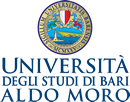L’età dell'oro del Regionalismo. La cultura regionalista in Francia, Germania e Spagna (1890-1937)
DOI:
https://doi.org/10.15162/2282-5681/1600Parole chiave:
Regionalismo, arte, architettura, esposizioni internazionali, nation-buildingAbstract
La creazione di una cultura regionalista transnazionale a partire dal 1890 giocò un ruolo fondamentale nella costruzione di identità regionali più limitate. Un’analisi del regionalismo in pittura, architettura e nelle esposizioni internazionali in Spagna, Francia e Germania mette in evidenza che la cultura regionalista era il prodotto di una fase specifica della storia europea: la transizione dalla società di notabili del XIX secolo alla società di massa contemporanea. Quindi, la cultura regionalista era più intimamente connessa con il processo di costruzione nazionale che con i movimenti regionali che volevano indebolire i legami con la grande patria.
The creation of a transnational regionalist culture from about 1890 played a crucial role in the construction of more clearly delimited regional identities. An analysis of regionalism in painting, architecture and international exhibitions in Spain, France and Germany shows that the culture of regionalism was the product of a specific phase in European history: the transition from the nineteenth century society led by notables to contemporary mass society. Regionalist culture therefore was more closely connected to the nation-building process than to regional movements that wanted to loosen the ties with the greater fatherland.
Riferimenti bibliografici
Applegate C. (1990), A Nation of Provincials: The German Idea of Heimat, University of Califor- nia Press, Berkeley.
Applegate C. (1999), «A Europe of Regions: Reflections on the Historiography of Sub- National Places in Modern Times», American Historical Review, vol. 104, n. 4, pp. 1157- 1183.
Archilés F. – Martí M. (2001), «Ethnicity, Region and Nation: Valencian Identity and the Spanish Nation-State», Ethnic and Racial Studies, vol. 24, Issue 5, pp. 779-797.
Archilés F. (2006a), «La novela y la nación en la literatura española de la Restauración. Re- gión y provincia en el imaginario nacional», in Forcadell Álvarez, C. – Romeo Mateo, M. C. (eds.), Provincia y nación. Los territorios del liberalismo, Institución Fernando el Católico, Zaragoza, pp. 161-190,
http://ifc.dpz.es/recursos/publicaciones/26/55/_ebook.pdf.
Archilés F. (2006b), «‘Hacer región es hacer patria’. La región en el imaginario de la nación española de la Restauración», Ayer, n. 64, pp. 121-147.
Augusteijn J. – Storm E. (ed.) (2012), Nation and Region: Nation-Building, Regional Identities and Separatism in Nineteenth-Century Europe, Palgrave Macmillan, Basingstoke.
Brinkmann S. (2005), Der Stolz der Provinzen, Regionalbewußtein und Nationalstaatsbau im Spanien des 19. Jahrhunderts, Peter Lang, Frankfurt-am-Main.
Canizaro V. B. (ed.) (2007), Architectural Regionalism: Collected Writings on Place, Identity, Modern- ity, and Tradition, Princeton Archtectural Press, New York.
Cavazza S. – Johler R. (eds.) (1995), Identità e culture regionali. Germania e Italia a confronto, num. monografico di Memoria e Ricerca, vol. 3, n. 6 (dicembre).
Cavazza S. (2006), «Identità nazionale e identità locale nella storia italiana: elementi per una riflessione», in Schwarze S. (eds.), Siamo una nazione? Nationales Selbstverständnis im a- ktuellen Diskurs der Sprache, Literatur und Geschichte Italiens, Stauffenberg, Tübingen, pp. 15-33.
Cavazza S. (2010), «Nationale Identität, lokale Patriotrismus und Volkskunde in Italien 1861-1918», Jahrbuch für Europäische Ethnologie, n. 5, pp. 53-66.
Confino A. (1997), The Nation as a Local Metaphor: Württemberg, Imperial Germany, and National Memory, 1871-1918, University of North Carolina Press, Chapel Hill.
Deibel F. (1910), Ludwig Dettmann, Velhagen & Klasing, Bielefeld-Leipzig.
Ditt K. (1990), «Die deutsche Heimatbewegung 1871-1945», in Cremer W. – Klein A. (eds.): Heimat. Analysen, Themen, Perspektiven, Westfalen Verlag, Bielefeld, pp. 135-155.
Fischer C. J. (2010), Alsace to the Alsatians? Visions and Divisions of Alsatian Regionalism, 1870- 1939, Berghahn Books, New York.
Forcadell Álvarez C. – Romeo Mateo M. C. (eds.) (2006), Provincia y nación. Los territorios del liberalismo, Institución Fernando el Católico, Zaragoza, http://ifc.dpz.es/recursos/publicaciones/26/55/_ebook.pdf.
Ford C. (1993), Creating the Nation in Provincial France: Religion and Political Identity in Brittany, Princeton University Press, Princeton.
Fradera J. M. (1992), Cultura nacional en una societat dividida. Patriotisme i cultura a Catalunya (1838-1868), Curial, Barcelona.
Fullaonda D. (1980), Manuel María Smith Ibarra, arquitecto 1879-1956, Madrid.
Geppert A. C. T. (2010), Fleeting Cities: Imperial Expositions in Fin-de-Siècle Europe, Palgrave Macmillan, Basingstoke.
Gerson S. (2003), The Pride of Place: Local Memories and Political Culture in Nineteenth-Century France, Cornell University Press, Ithaca.
Guy K. M. (2003), When Champagne became French: Wine and the Making of a National Identity, Johns Hopkins University Press, Baltimore.
Henn U. (1987), Die Mustersiedlung Ramersdorf in München. Ein Siedlungskonzept zwischen Traditi- on und Moderne, Munich.
Hirsh S. L. (2003), «Swiss Art and National Identity at the Turn of the Twentieth Century» in Facos M. – Hirsh S. L. (eds.), Art, Culture and National Identity in Fin-de-Siècle Europe, Cambridge University Press, Cambridge, pp. 250-287.
Hofer S. (2005), Reformarchitektur 1900-1918. Deutsche Baukünstler auf der Suche nach dem natio- nalen Stil, Menges, Stuttgart.
Holmes J. (1971), Olympiad 1936: Blaze of Glory for Hitler’s Reich, Ballantine Books, New York.
Hurtt D. D. (2005), «Rivalry and Representation: Regionalist Architecture and the Road to the 1937 Paris Exposition», Tesi di dottorato, University of Virginia.
Jenkins J. (2003), Provincial Modernity: Local Culture and Liberal Politics in Fin-de-Siècle Hamburg, Cornell University Press, Ithaca.
King J. (2002), Budweisers into Czechs and Germans: A Local History of Bohemian Politics, 1848- 1948, Princeton University Press, Princeton.
Kunz G. (2000), Verortete Geschichte. Regionales Geschichtsbewusstsein in den deutschen Historischen Vereinen des 19. Jahrhunderts, Vandenhoeck & Ruprecht, Göttingen.
Lampugnani V. – Schneider R. (eds.) (1992), Moderne Architektur in Deutschland 1900 bis 1950. Reform und Tradition, Hatje, Stuttgart.
Lane B. M. (2000), National Romanticism and Modern Architecture in Germany and the Scandina- vian Countries, Cambridge University Press, Cambridge.
Lafuente Ferrari E. (1990), La vida y el arte de Ignacio Zuloaga, Editorial Planeta, Barcelona [2a ed.].
Lasserre C. (1986), «Le néo-basque: une autre face de la modernité, 1920-1940», Monuments Historiques, n. 147, pp. 65-73.
Le Couédic D. (1995), Les architectes et l’idée bretonne 1904-1945. D’un renouveau des arts à la re- naissance d’une identité, Société d’histoire et d’archéologie de Bretagne, Archives modernes d’architecture de Bretagne, Saint-Brieuc.
Loyer F. – Toulier B. (eds.) (2001), Le Régionalisme, architecture et identité, Monum-Éditions du Patrimoine, Paris.
Mainer J. C. (2004), «Notas sobre el regionalismo literario en la Restauración: el marco polí- tico e intelectual de un dilema», in Enguita, J. M. - Mainer, J. C. (eds.): Entre dos siglos. Literatura y aragonesismo, Institución Fernando el Católico, Zaragoza, pp. 7-28.
Navascués Palacio, P. (1985), «Regionalismo y arquitectura en España (1900-1930) », Arqui- tectura & Vivienda, n. 3, pp. 28-36.
Núñez Seixas X. M. (2001), «The Region as Essence of the Fatherland: Regionalist Variants of Spanish Nationalism (1840-1936)», European History Quarterly, vol. 31, n. 4, pp. 483-518.
Núñez Seixas X. M. (ed.) (2006), La construcción de la identidad regional en Europa y España (siglos XIX y XX), num. monografico di Ayer, n. 64.
Núñez Seixas X. M. – Umbach M. (2008), «Hijacked Heimats: National Appropriations of Local and Regional Identities in Germany and Spain, 1930-1945», European Review of History, vol. XV, pp. 295-316.
Pabón J. (1952), Cambó 1876-1918, Alpha, Barcelona.
Paliza Monduate M. (1990), Manuel María de Smith Ibarra. Arquitecto, Diputación Foral de Bizkaia/Bizkaiko Foru Albundia, Bilbao.
Peer S. (1998), France on Display : Peasants, Provincials, and Folklore in the 1937 Paris World’s Fair, State University of New York Press, Albany.
Petri R. (2003), «Heimat/Piccole patrie. Nation und Region im deutschen und im italienischen Sprachraum», Geschichte und Region/Storia e Regione, vol. XII, pp. 559-578.
Quiroga A. (2007), Making Spaniards: Primo de Rivera and the Nationalizaton of the Masses, Palgrave Macmillan, Basingstoke.
Reyero C. – Freixa M. (1999), Pintura y escultura en España (1800-1910), Cátedra, Madrid.
Rodríguez Bernal E. (1994), Historia de la Exposición Ibero-Americana de Sevilla de 1929, Ayuntamiento de Sevilla, Sevilla.
Sahlins P. (1989), Boundaries: The Making of France and Spain in the Pyrenees, University of Cali- fornia Press, Berkeley.
Schäfers S. (2001), Vom Werkbund zum Vierjahresplan. Die Ausstellung «Schaffendes Volk», Düsseldorf 1937, Droste Verlag, Düsseldorf.
Schmidt K. E. (1905), Französische Malerei des 19. Jahrhunderts, Seemann, Leipzig.
Sigel P. (2000), Exponiert. Deutsche Pavillons auf Weltausstellungen, Bauwesen Verlag, Berlin.
de Solà-Morales I. (1985), La Exposición Internacional de Barcelona 1914-1929: Arquitectura y Ciudad, Feria de Barcelona, Barcelona.
Stauter-Halsted K. (2001), The Nation in the Village: The Genesis of Peasant National Identity in Austrian Poland, 1848-1914, Cornell University Press, Ithaca.
Steber M. (2010), Ethnische Gewissheiten. Die Ordnung des Regionalen im bayerischen Schwaben vom Kaiserreich bis zum NS-Regime, Vandenhoeck & Ruprecht, Göttingen.
Storm E. (2003), «Regionalism in History, 1890-1945: The Cultural Approach», European History Quarterly, pp. 251-265.
Storm E. (2009), «Painting Regional Identities: Nationalism in the Arts, France, Germany and Spain, 1890-1914», European History Quarterly, vol. 39, n. 4, pp. 557-583.
Storm E. (2012), «The Birth of Regionalism and the Crisis of Reason: France, Germany and Spain», in Augusteijn J. – Storm E. (eds.), Nation and Region: Nation-Building, Regional Identities and Separatism in Nineteenth-Century Europe, Palgrave Macmillan, Ba- singstoke, pp. 36-57.
Suárez-Cortina M. (1994), Casonas, hidalgos y linajes. La invención de la tradición cántabra, Editorial Límite, Santander.
Thiesse A.-M. (1991), Écrire la France. Le Mouvement littéraire régionaliste de langue française entre la Belle Epoque et la Libération, PUF, Paris.
Trillo de Leyva M. (1980), La Exposición Iberoamericana. La transformación urbana de Sevilla, Ayuntamiento de Sevilla, Sevilla.
Tusell J. (1999), Arte, historia y política en España (1890-1939), Biblioteca Nueva, Madrid.
Umbach M. (2009), German Cities and Bourgeois Modernism, 1890-1924, Oxford University
Press, Oxford.
Vigato J-C. (1994), L’Architecture régionaliste: France 1890-1950, I.F.A./Norma, Paris.
Villar Movellán A. (1979), Arquitectura del regionalismo en Sevilla. 1900-1935, Diputación Provincial de Sevilla, Sevilla.
Walther E. (1939) «Der deutsche Lebensraum», in Ernst W. Maiwald (ed.): Reichsausstellung «Schaffendes Volk» Düsseldorf 1937. Ein Bericht, Düsseldorf, vol. I, pp. 71-73.
White W. – Zimmer O. (eds.) (2011), Nationalism and the Reshaping of Urban Communities in Europe, 1848-1914, Palgrave Macmillan, Basingstoke.
Wörner M. (1999), Vergnügen und Belehren. Volkskultur auf den Weltausstellungen 1850-1900, Waxmann, Münster.
Wright J. (2003), The Regionalist Movement in France 1890-1914: Jean Charles-Brun and French Political Thought, Oxford University Press, Oxford.
Downloads
Pubblicato
Fascicolo
Sezione
Licenza
Nazioni e regioni è una rivista open access che applica la licenza Creative Commons CC BY-NC-ND 4.0 a tutti i contenuti pubblicati.
Nazioni e regioni is an open-access journal that applies the Creative Commons CC BY-NC-ND 4.0 licence to all published contents.







